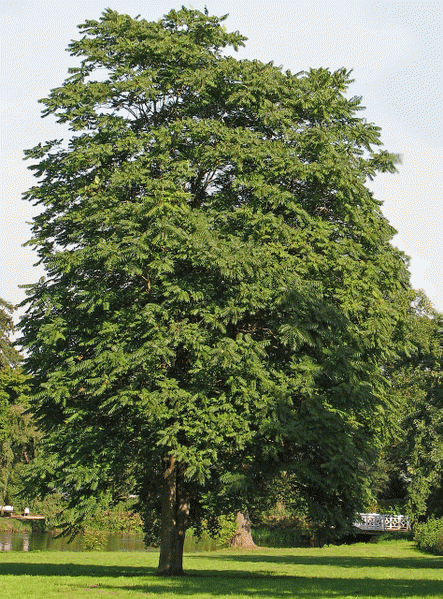
It is considered a pest. A weed. An invasive species. An intruder. An eyesore. A symbol of post-industrial decay. A regular feature of blighted urban areas.
It has been derided as the "ghetto palm" and the "stink tree." Its smell has been described as rotting peanuts.
Say hello to Ailanthus altissima , a deciduous tree of the Simaroubaceae family native to Taiwan and China, where it has a much different legacy -- and might as well be from Heaven for all the value it has provided to Chinese traditional medicine and silk production.
Called chouchun in Mandarin, it is repeatedly mentioned in Chinese medical texts -- as well as the oldest extant Chinese dictionary -- for its supposed ability to cure mental illness and treat bowel ailments, asthma, epilepsy and heart arrythmia.
It is also grown extensively in China as a host tree for the Ailanthus silkmoth ( Samia cynthia ), a saturniid moth used to produce silk fabric. While its larvae are content to feed on a variety of trees and shrubs, the female moth will only lay its eggs in its eponymous tree.
In 1740, French Jesuit missionary and amateur botanist Pierre Nicolas d'Incarville was sent on a mission to China. With a package of seeds delivered to the Royal Society via the caravan routes to St. Petersburg, he introduced Ailanthus to the Western world.
At first, it was widely embraced in Europe, where chinoiserie dominated much of the continent's decorative arts. In 1784, it arrived in the United States. And for much of the 19th century, it was a common street tree, favored for its rapid growth and resistance to pollution.
But by the 20th century, it was considered a noxious weed in Europe, Australia, New Zealand and the United States, where 44 states, Puerto Rico and Washington D.C. list it as an invasive species. It has spread along a third of Virginia's highways, for example, extirpating many native species.
The Tree of Heaven is hard to kill. Severing the tree from the main stem only causes it to re-sprout aggressively from its base, making it extremely difficult to eradicate. And its roots are remarkably strong and energetic in their search for water. A seed that finds its way into a tiny crack in concrete will often lead to a tree whose roots are powerful enough to damage sidewalks, foundations and even sewer systems.
But as forcefully as it grows downwards, it also shoots upwards -- and rapidly so, reaching heights up to 50 feet (15 meters) in just 25 years. Indeed, its scientific name is derived from its Indonesian vernacular name Aiianto , which means "reaching for the sky."
"No matter where its seed falls, it makes a tree which struggles to reach the sky," Smith writes.
"It grows in boarded up lots and out of neglected rubbish heaps. It grows up out of cellar gratings. It is the only tree that grows out of cement. It grows lushly...survives without sun, water, and seemingly earth. It would be considered beautiful except that there are too many of it."
In 2005, Ingo Vetter, Annette Weisser and Mitch Cope founded the Detroit Tree of Heaven Woodshop, a group of artists working exclusively with wood processed from the Ailanthus altissima , what they refer to as "a resource unfailing in Detroit," populating "abandoned lots and deserted factory sites."
(Note: You can view every article as one long page if you sign up as an Advocate Member, or higher).




